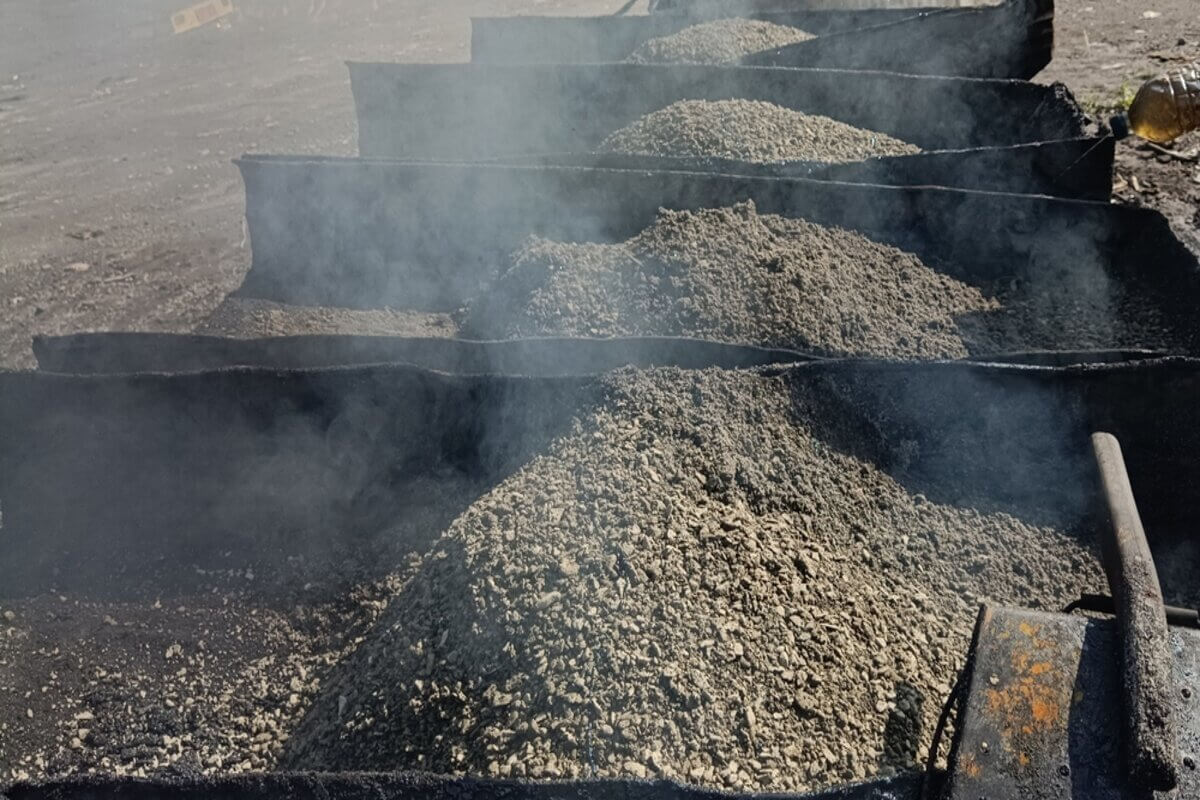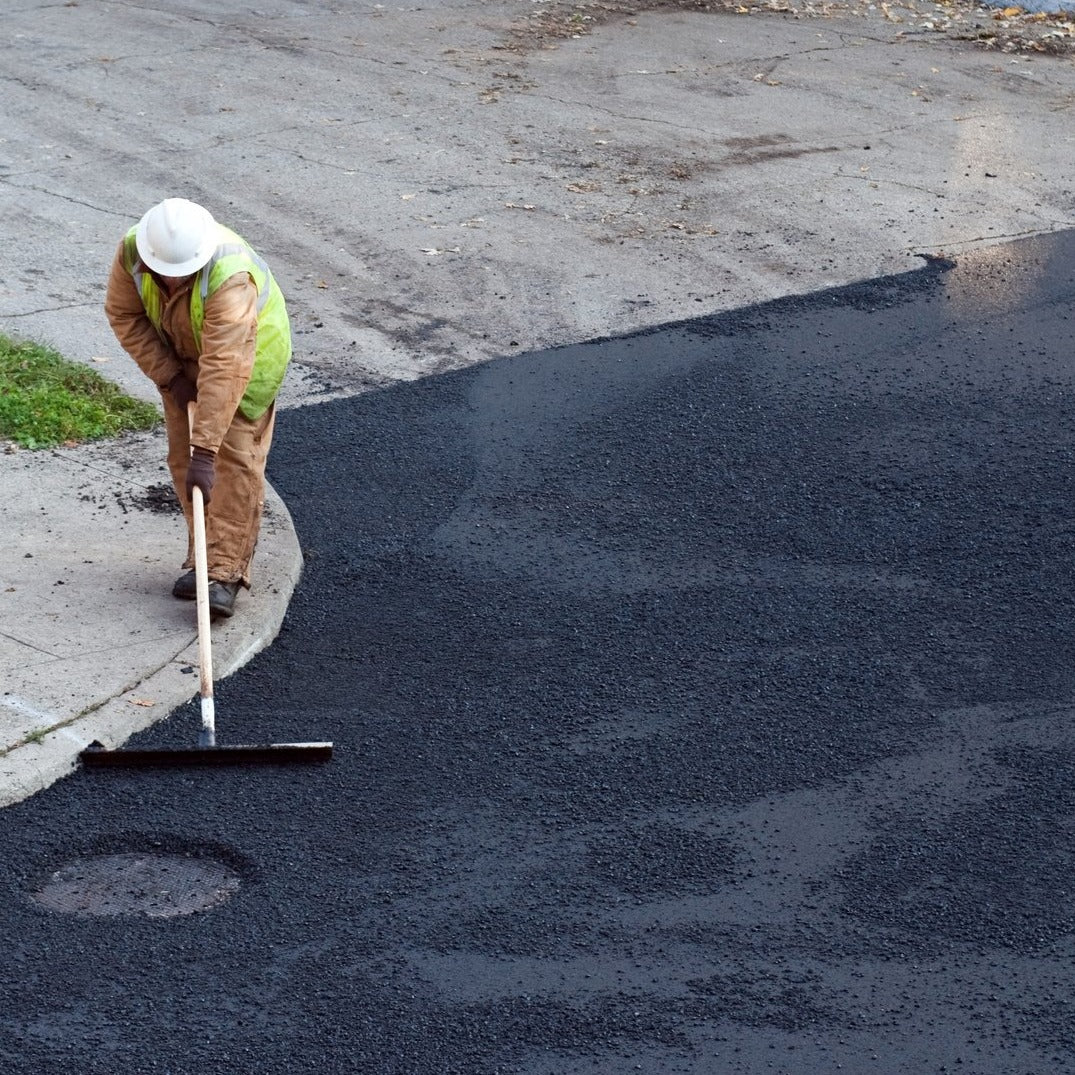Unlocking the Keys of Warm Mix Asphalt Innovation
Exploring the midsts of hot mix asphalt innovation uncovers a globe where precise formulas and careful procedures assemble to shape our roads and facilities. The combination of aggregates, fillers, and binders isn't just a construction task however a critical orchestration of resilience and effectiveness. As we peer into the intricate dancing of parts, a tapestry of strength and sustainability unfolds. However what lies underneath this surface area of asphaltic proficiency, and what keys wait to be unveiled in the realm of leading technologies?
Relevance of Warm Mix Asphalt
Warm Mix Asphalt plays a crucial duty in modern-day infrastructure advancement as a result of its sturdiness and cost-effectiveness. As the most commonly made use of leading material for roadways, freeways, and car park, Warm Mix Asphalt supplies an array of advantages that add to its significance in construction jobs. One essential benefit is its ability to withstand heavy traffic tons and harsh climate condition, supplying a resilient and trustworthy surface area for transportation networks. In Addition, Hot Mix Asphalt is cost-effective in both first building and construction and long-term maintenance, making it a preferred choice for lots of framework jobs.
The longevity of Warm Mix Asphalt stems from its make-up, which consists of accumulations, binder, and filler materials that are meticulously chosen and blended to satisfy certain efficiency needs. Overall, the relevance of Warm Mix Asphalt in infrastructure advancement can not be downplayed, as it continues to be a keystone of modern building techniques.
Elements of Asphalt Mixes
The structure of asphalt mixes consists of thoroughly picked accumulations, binder, and filler materials that are essential for attaining specific performance requirements. Aggregates are the key component of asphalt mixes, supplying stamina and stability. The binder, normally bitumen or asphalt cement, holds the aggregates together and supplies flexibility and longevity to the mix.
The mix and percentage of these parts play a significant role in identifying the quality and performance of the asphalt mix. Engineers thoroughly develop the mix to fulfill details demands, considering aspects like web traffic quantity, climate conditions, and pavement life expectancy. Appropriate choice and harmonizing of accumulations, binder, and fillers are essential for producing sturdy, durable asphalt pavements.
Combining and Manufacturing Methods

When the aggregates are selected, the binder, frequently asphalt concrete, is included in bind the products together. The binder's high quality and amount considerably affect the mix's adaptability, resistance, and stamina to environmental aspects. In addition, fillers like hydrated lime or Portland concrete might be included to improve details features of the asphalt mix, such as its workability or wetness resistance.
Throughout production, the aggregates and binder are heated up, typically in between 250-325 ° F(121-163 ° C ), to assist in blending and ensure appropriate coating of the aggregates. The blending process has to be comprehensive to accomplish a homogeneous mixture that promotes the preferred performance features of the asphalt. Different strategies, such as batch blending or drum mixing, are employed to attain top notch and constant asphalt blends for building jobs.
Aspects Influencing Asphalt Performance
Aspects affecting asphalt performance click here to read incorporate a range of variables that affect the resilience, long life, and overall top quality of asphalt pavements. One key element is the top quality of materials used in the asphalt mix.

Environmental problems likewise affect asphalt performance. Temperature level variations, wetness seepage, and website traffic tons can all impact the structural honesty of the pavement. Design factors to consider, such as pavement thickness and water drainage, are necessary in making certain the long-lasting performance of the asphalt pavement. By carefully thinking about these designers, factors and contractors can maximize asphalt efficiency and improve the solution life of pavements.
Lasting Practices in Asphalt Technology

Furthermore, the development of warm-mix asphalt (WMA) modern technologies has gotten grip in recent years. WMA allows for the manufacturing and placement of asphalt mixes at lower temperatures contrasted to conventional hot-mix asphalt, resulting in reduced power our website consumption and greenhouse gas emissions. The usage of porous asphalt mixes can help reduce stormwater drainage concerns by permitting water to penetrate via the sidewalk and into the ground, promoting natural water filtration and reenergize processes. By executing these sustainable techniques, the asphalt market can add to developing a more ecologically friendly and durable infrastructure network.
Conclusion
Finally, hot mix asphalt modern technology plays a crucial duty in modern-day facilities development as a result of its durability and cost-effectiveness. By very carefully stabilizing components, utilizing proper mixing strategies, and considering various variables, designers can create high-grade asphalt blends that hold up against hefty traffic loads and harsh climate condition. Welcoming lasting methods, such as this link making use of warm-mix technologies and recycled products, additionally improves the environmental kindness of asphalt technology.
Blending and production methods in hot mix asphalt technology entail the exact mix and handling of aggregates, binder, and fillers to develop a high-performance and sturdy asphalt mix.Variables influencing asphalt efficiency include a variety of variables that affect the longevity, longevity, and overall quality of asphalt pavements. Sustainable practices in asphalt innovation incorporate various campaigns intended at lowering the environmental influence of asphalt production and paving processes. By integrating reclaimed asphalt sidewalk (RAP) and recycled asphalt tiles (RAS) into brand-new asphalt blends, the market can dramatically minimize the usage of raw products and power, while likewise reducing landfill waste.
WMA allows for the manufacturing and placement of asphalt blends at lower temperature levels contrasted to traditional hot-mix asphalt, resulting in lowered power consumption and greenhouse gas emissions.